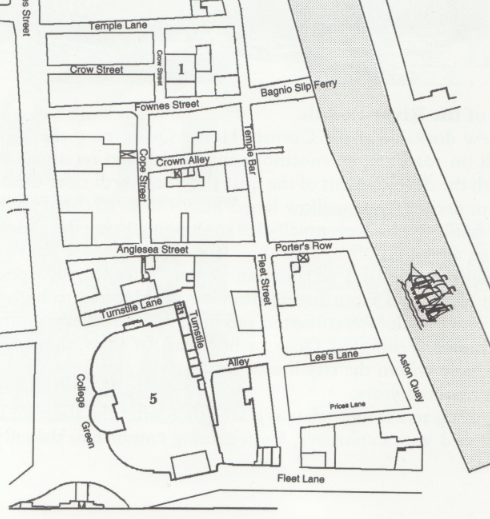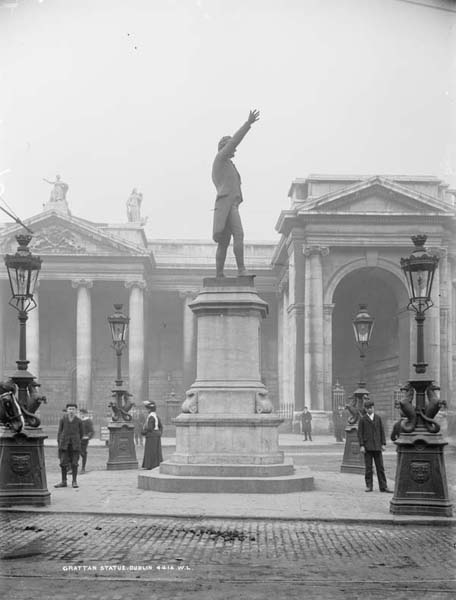On February 27 1864, The Nation newspaper reported on a ‘ingrate and dishonouring act’ carried out by Dublin Corporation, when the Corporation decided upon Prince Albert, and not Henry Grattan, for the prime statue location at College Green. The paper ran a selection of extracts from other papers across the island, which all slammed the decision, with the Wexford People noting that “thirty-two against fourteen decided that Henry Grattan might go seek a place elsewhere, and that Prince Albert should be the choice of Ireland.”
By December of 1865, The Nation was boasting that the planned “German invasion” of College Green,in the form of a statue to Prince Albert, was no more. There had been protests against the statue, for example a meeting at the Rotunda which saw Fenians take the stage. The Lord Mayor had read a letter from the Duke of Leinster in Council which proposed that the Prince Albert Statue Committee erect their monument to Albert in the grounds of the Royal Dublin Society House. “The idea that Prince Albert’s statue would ever be raised in College Green was manifestly as hopeless and wild as a design to move the Hill of Howth” the paper stated, and the planned “desecration” of College Green, an area historically associated with Henry Grattan and his Irish Volunteers, had been averted. “The husband of the famine Queen” was not to have pride of place on College Green.
Today, Prince Albert’s statue is one of the last ‘imperial’ statues in the city to survive. In the city of exploding statues, Albert today sits hidden in the grounds of Leinster House, right by the Natural History Museum’s walls, with few Dubs aware of his presence. College Green would become home to John Henry Foley’s statue of Grattan, a statue unveiled on January 6 1875. At that unveiling A.M Sullivan spoke of how “this is an age where in other lands principles are abroad teaching class to war upon class. Come hither, Irish men…..behold the figure of a man who born in the highest sphere of society, had a heart that felt for the poorest cottager on an Irish hillside.”
The Irish Times report on the unveiling of the statue noted that the position was perfect for a monument to Grattan, alongside Parliament and facing his alma mater. “His statue has been placed on the only site in Ireland that was worthy of the man, fronting equally two buildings with which his name will be forever most gloriously associated.”
Leinster Lawn, home to Prince Albert today, was of course also once home to Queen Victoria. The figures from the base of her monument are today in Dublin Castle, and will be examined here soon, but Victoria herself would end up in Australia, removed from Leinster Lawn in 1947 and placed in storage for several decades.
In a 2005 letter to The Irish Times, MM Ireland wrote a letter in response to one stating the statue of Victoria should be returned to Dublin and placed alongside Prince Albert on Leinster Lawn once more.
“I do not know whether the Australians bought Queen Victoria’s statue from us, when it was found to be surplus to our requirements, but we should certainly let them have Prince Albert for nothing.”
It’s difficult to imagine a situation where Prince Albert’s statue would have survived following independence were it placed at College Green. King William of Orange, who sat at College Green for so many years upon his horse, was blown up in the 1940s. Today, that spot is occupied by Irish nationalist Thomas Davis.

























 Click on the book for more.
Click on the book for more. Click on the book for more.
Click on the book for more.